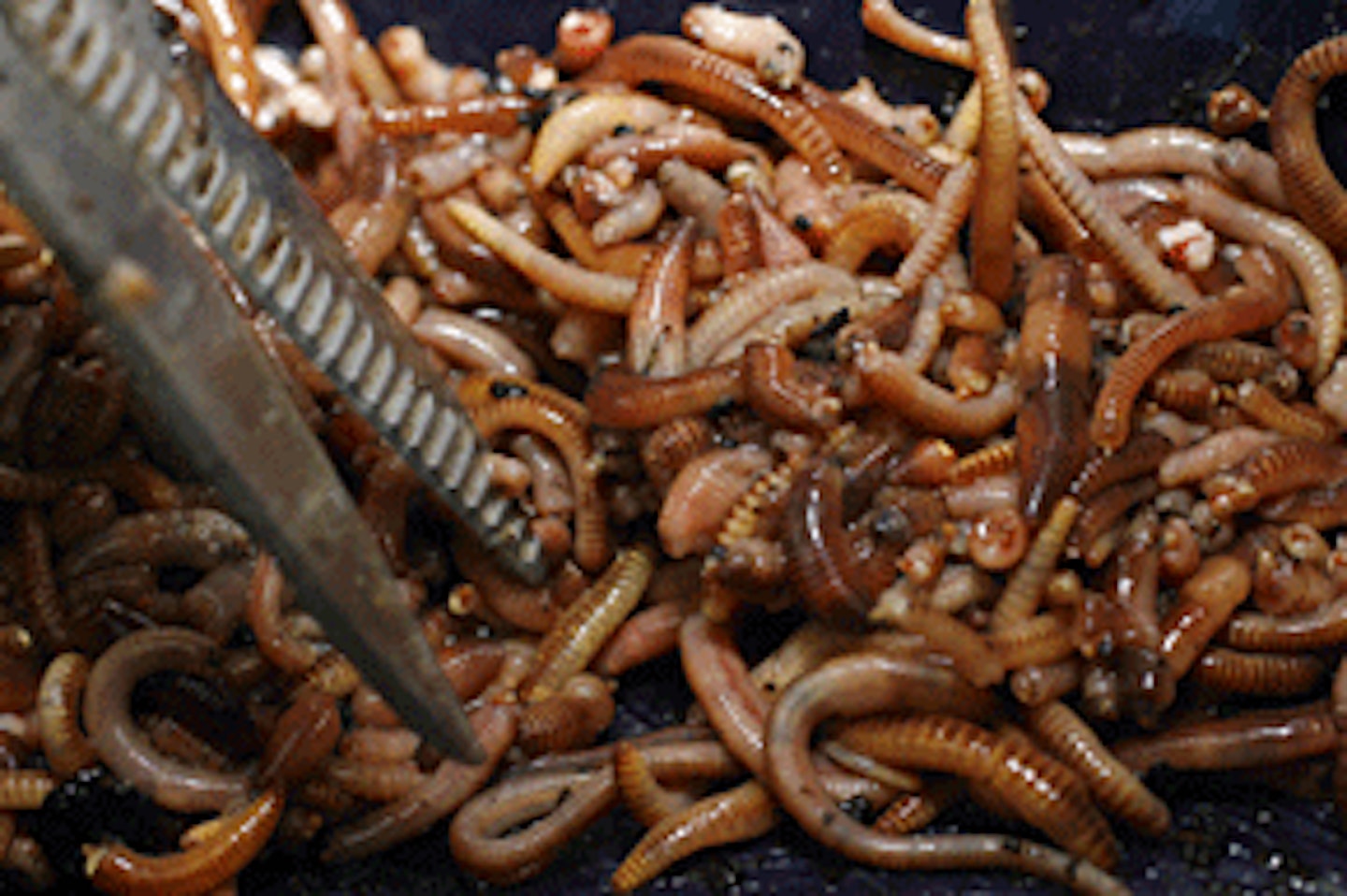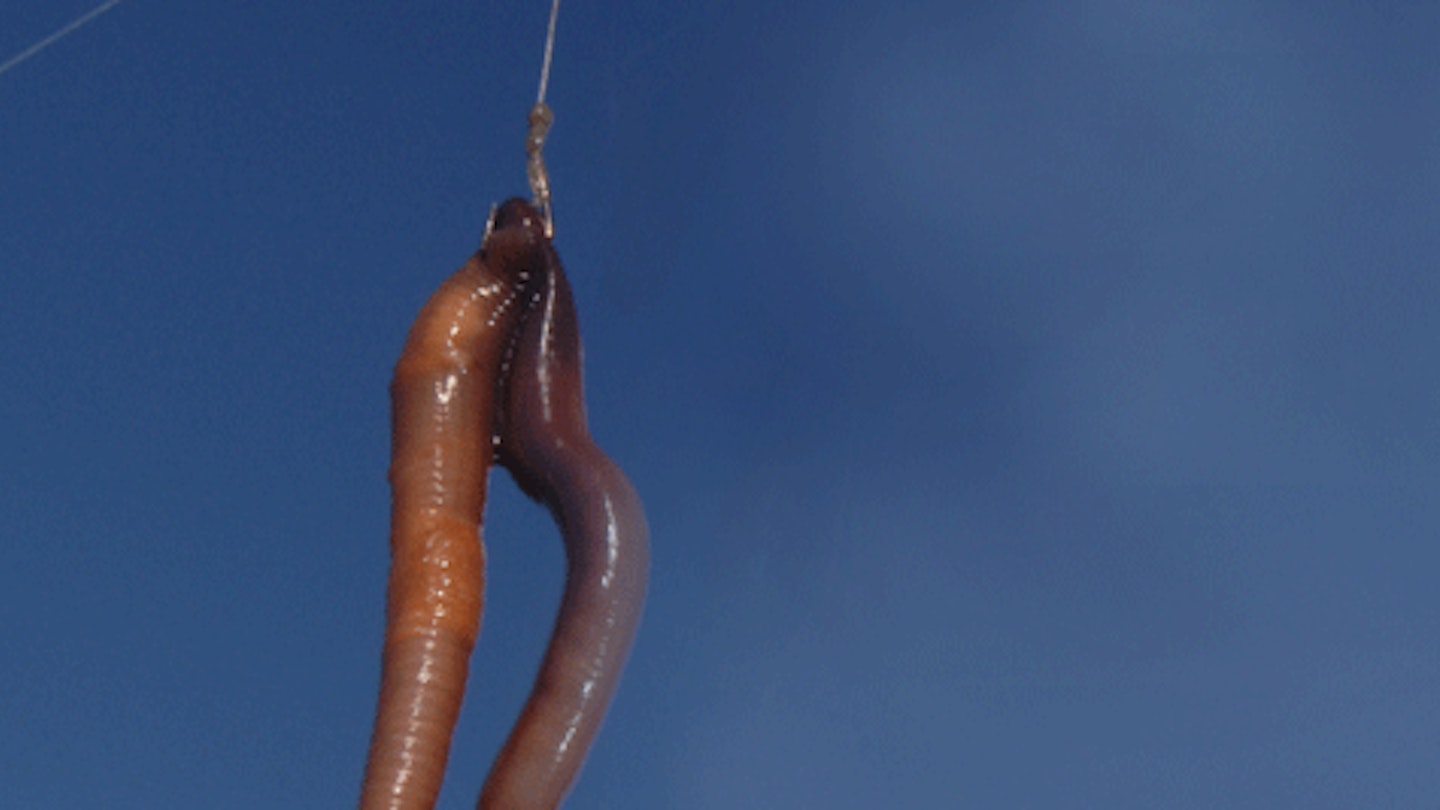Good old garden lobworms, compost-loving redworms and the Dutch dendrobaena worms all make great fishing baits in certain circumstances. Their juicy protein-packed bodies are packed with goodness that gives the fish all the nourishment it needs, so it’s no wonder why the fish love them so much.
Lobworms
These giant worms are found in the soil of your garden. They are brilliant baits to use on rivers, when the rivers are high, flooded and coloured. The reason why they are so good in those conditions is because of the size of the bait – the fish can find it easily in the murky water.
But more importantly, the size and the wriggling action of lobworms makes them also impossible for perch and tench to resist. A carefully presented lobworm, either floatfished over depth or legered tight to a marginal shelf or weed bed is sure to be taken by either of those species.
The great thing about lobworms is that they are free for those anglers prepared to put in a little effort. A little time spent digging the garden borders will provide you with a handful of worms, but if you want a mass of them wait until there’s a very damp evening and head out to any park, cricket pitch or well-mown garden, armed with a torch, when it’s pitch black.
By carefully creeping along the grass you’ll find that the worms have come out of their burrows and will be wriggling across the grass to find a mate. You will be able to pick them off the grass and place them into your bait bucket.
But it’s not always that easy – some of the worms may only be protruding slightly from their burrows. You’ll have to get hold of them and gently prize then from the burrows by pulling gently. It’s difficult to explain the amount of force that you need to use and the best method, but with practice you’ll master it really quickly.
If any of the worms that you collect is damaged in any way, you MUST not keep it. It’s unknown why this happens, but if you do store a damaged or broken worm with any other pristine conditioned worms, they will all die within hours, and you will have wasted all your time and effort.
Hooking lobworms

Firstly, you’ll need to match the size of your hook to the size of the bait, so you’ll need quite a substantial hook for lobbies. A size eight, six, four or even a size two will be required. Use a size eight or a six for lobworm tails (the last inch or so of a broken lobworm), or a size four or two for a whole lobworm (hooked cleanly through the thicker and darker coloured saddle of the worm).
Redworms
These little worms are a favourite among tench, bream and roach – they absolutely adore redworms. What’s more, redworms are the perfect size bait for these species too.
The best place to find a readily available supply of redworms is a well-established compost heap. The warm, rotting vegetation provides a healthy home for the worms which will soon breed and thrive in that sort of environment.
Redworms can be bought from good tackle dealers, but if you do have your own compost heap, or you have a friendly neighbour who will let you turn his or her compost heap over to collect the redworms, you’re onto a winner!
They can be fished whole, or halved, on their own or in conjunction with another bait to create a cocktail (a great technique to trick bream and tench).
A fully-grown whole redworm would be best fished upon a size 14 or better still a size 16 hook, while small sections of redworm are better upon a size 18 or even a size 20 hook when the going gets a little tough.
A great bait for roach and bream is to use half a redworm. The best way to hook this is to thread the hook through the broken end of the worm as this is the part of the worm that the fish will suck up first – that’s because of the scent that the broken section is releasing into the water.
Dendrobaena worms
These worm originate from Holland. They are a large redworm – twice the size of our native redworm, and therefore they can make a much better bait. They can be bought from all good tackle shops throughout the year. Expect to pay around £12 for a kilo – more than enough for a full day’s fishing.
Bream, roach, tench, carp, chub and barbel will all accept a dendrobaea or a piece of dendrobaena worm.
If you read about anyone having a good catch using chopped worms they will more than likely have used dendrobaena worms for their ‘choppie’ mix – the mush of chopped-up worms that are used as a groundbait to attract fish such as perch, tench, bream, roach and carp.
Chopped worm is one of the very best ways to put together a good bag of quality fish, especially during the colder months. Introducing a pole cup of chopped up dendrobaena worms will attract fish on lakes, canals and on slower flowing rivers, but it’s not a great technique to use on fast and powerful rivers as the worms will simply be washed away.
Chopped up worms also make a superb fish-attracting additive for your groundbait mix. Bream especially will be attracted to a pile of groundbait laced with many small worm pieces, with their juices escaping into the water.
Fishing with chopped worms
This method is best fished using a pole for the simple reason that the chopped up worms are almost impossible to catapult as they spray all over the place, so you need to use a pole cup to introduce the chopped-up worm pieces into a single area with accuracy.
Firstly, you will need a decent pair of scissors. Any old scissors will do, but many anglers use purpose-made chopped worm scissors, available from all good tackle shops. These have either two or three blades – a bit like two or three scissors stuck side to side. They make chopping up the worms a whole lot easier.
The worms need cleaning first as they are stored in compost that can blunt the scissors. To do this you need to act quickly – grab a handful of worms, place them in a fine mesh landing net head and swish them in the margins quickly. Don’t let too many escape! Now place the cleaned worms into a clean bait box and use your scissors to cut them up into small pieces. They are now ready to use.
Fishing with chopped worms
 1 of 6
1 of 6LOBWORMS, REDWORMS AND DENDROBAENA WORMS
 2 of 6
2 of 6LOBWORMS, REDWORMS AND DENDROBAENA WORMS
 3 of 6
3 of 6LOBWORMS, REDWORMS AND DENDROBAENA WORMS
 4 of 6
4 of 6LOBWORMS, REDWORMS AND DENDROBAENA WORMS
 5 of 6
5 of 6LOBWORMS, REDWORMS AND DENDROBAENA WORMS
 6 of 6
6 of 6LOBWORMS, REDWORMS AND DENDROBAENA WORMS
Once you have plumbed the depth and have found your spot, cup a small amount of chopped worms and fish a piece of worm on your hook, right over the top. You’ll be quite amazed just how quickly chopped worms can attract fish, particularly those perch! But the carp, tench and bream will arrive soon after.
Chopped worms in a feeder
This method of fishing chopped-up worms is deadly for bream – perhaps the No1 technique to use to amass a good bag of bream.
You simply follow the steps above to clean and chop your worms, then mix your groundbait as you would normally, and add a small amount of chopped worms to your groundbait as you scoop it into your feeder
A small helping of casters or even squats will add extra attraction to your groundbait, and the best bait to use on the hook will either be a worm section or a worm and caster cocktail.
If you keep casting your groundbait and worm pieces to exactly the same spot throughout the session you’ll soon have those bream queuing up to be caught!

